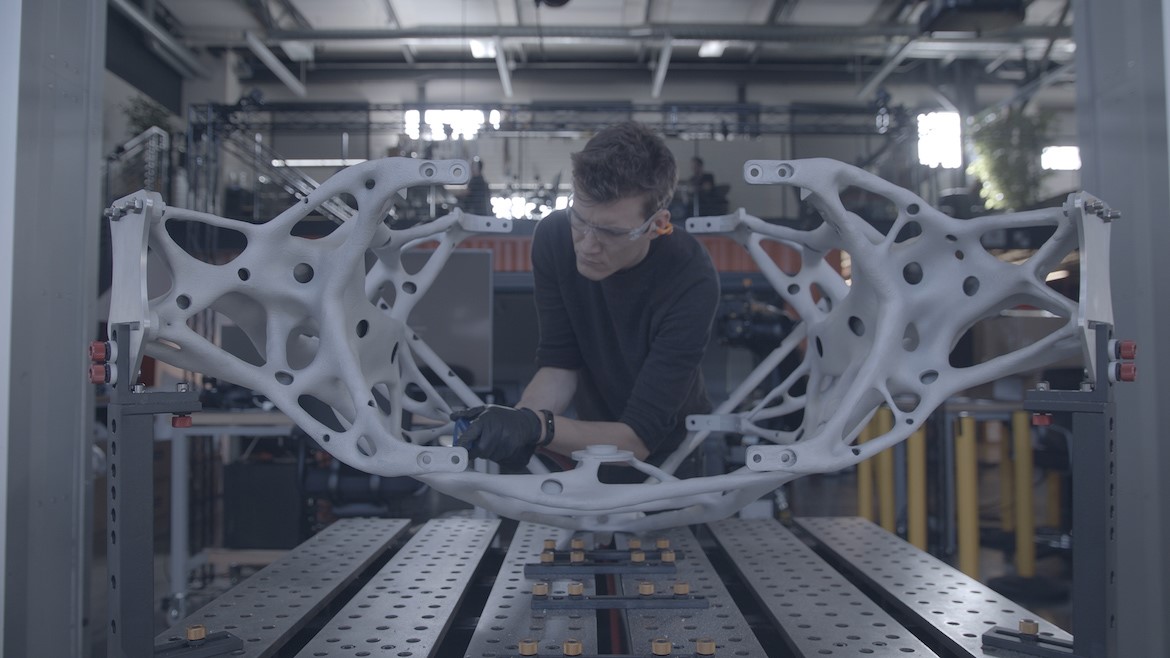
In 2012, the world watched the Rover Curiosity, a robot jeep, parachute onto the surface of Mars and collect samples. The data and images he sent helped us to learn more about the red planet and the possibilities of life there. The mission is yet another important milestone for the designers and engineers at NASA's Jet Propulsion Laboratory. But even though the robot still works today, little evidence of life has been found, past or present.
Now, scientists think the most likely places that could find signs of life in the solar system will be on the moons of Saturn and Jupiter. Achieving landings for such distant areas, however, presents much greater design and engineering challenges. To address these challenges, JPL (NASA's Jet Propulsion Laboratory) and Autodesk have initiated a collaborative research project so that JPL can explore new approaches to design and manufacturing processes for space exploration, with the customized application of space technology. generative design from Autodesk.
Mark Davis, Senior Director of Industrial Research at Autodesk, is a member of the team that took the first approach with JPL on possible collaboration. "If they could only improve performance on 10%, it wouldn't matter. On the other hand, if we could provide software tools to help them achieve a performance improvement of 30% or more it would be interesting. This project demonstrates that Autodesk technologies can offer savings at this level, ”he said.
To carry out such a mission, a probe needs to perform complicated operational functions at temperatures far below zero and withstand much higher radiation levels than on Earth.
In space operations, take-off weight is one of the most critical considerations. Each kilogram of mass that can be cut from the structural payload allows for a critical increase in the scientific load of sensors and instruments to search for life beyond Earth.
Innovation by Design
Generative design is a relatively new design approach that uses machine intelligence and cloud computing to quickly generate a broad set of design solutions that fit the specific constraints set by engineers. It allows design teams to explore a much broader design space, while still being tied to the manufacturing and performance requirements dictated by the team or the environment.
A commercial form of generative design technology is available today on Fusion 360, Autodesk's cloud-based product development platform. “We took a system that was developed to help our customers solve suspension problems at the system level in a Formula 1 racing car and applied new requirements for critical structural constraints for space exploration. This gave us a chance to further boost the capabilities of the software and help our customers solve even bigger and more sophisticated problems, ”said Mark.
For the project, the JPL team explored the use of generative design experimental technology for various structural components, including the internal structure containing the scientific instruments and the external structure that connects the legs of the landing module to the main cargo box. The team was able to reduce the mass of the external structure by 35% compared to the baseline design with which they started.
Generative design is often associated with 3D printing, also known as additive manufacturing, which is suitable for the complex, organic-looking shapes that the software produces based on user specifications. But the software also offers users the ability to set restrictions for their other manufacturing processes. “We now have the ability to help our customers resolve their multiple manufacturing restrictions simultaneously, which adds CNC machining and casting options, in addition to 3D printing,” explains Davis.
Learn, improve, repeat
One of the main benefits of generative design is that it allows the JPL team to quickly iterate through their projects. "As a project matures and new environmental or performance data is received, generative design can allow our customers to create new projects quickly," says Karl Willis, Autodesk's technology leader in the project. "They know that they need to explore new ways of doing things, keeping the risk level low," he concludes.
Most design teams take 2 to 4 months to revert a revised project, he points out. Working with generative design, this process can take 2 to 4 weeks. “This flexibility and speed to update an existing problem definition, instead of starting from scratch, combined with the ability for customers to specify manufacturing constraints, makes it a true paradigm shift for the people who design these types of structures,” says Willis.
For the time being, the application of generative design is still considered a development research project within the company. Just as the computational power of mainframe computers helped the space program reach new heights in the 1960s, technologies like generative design are creating new possibilities in space exploration, allowing us to go further and learn more about our place in the universe.












